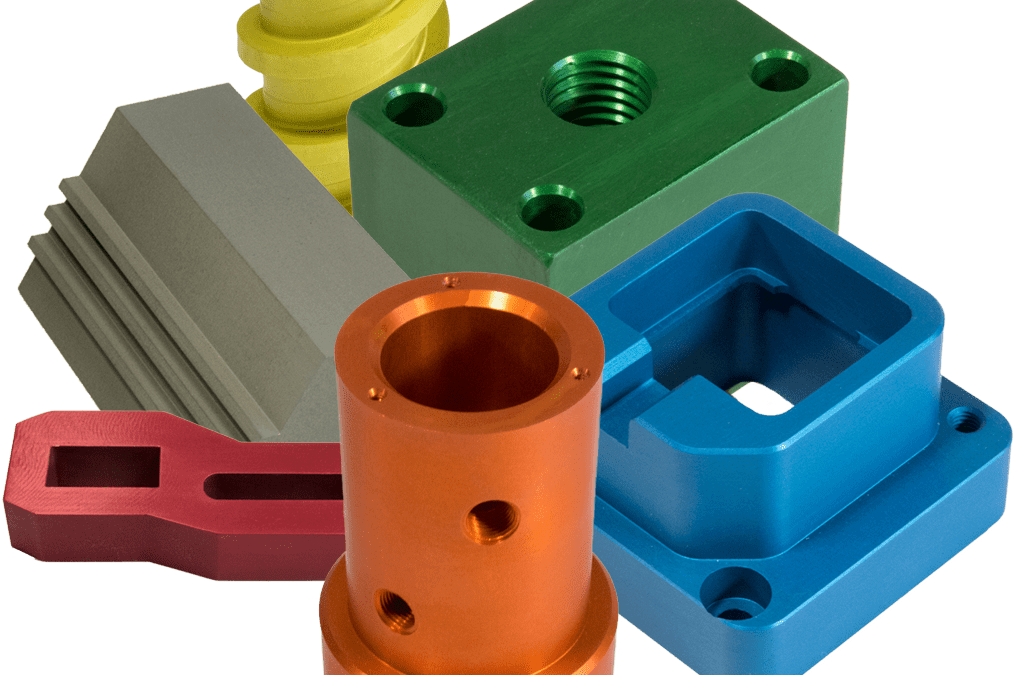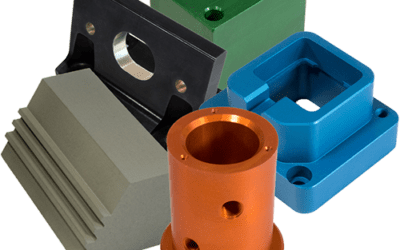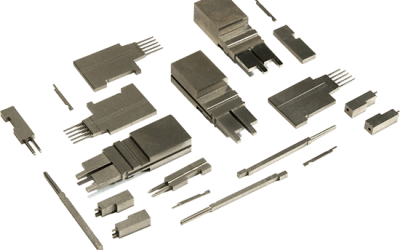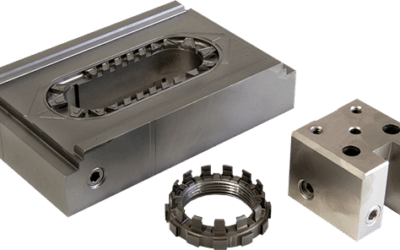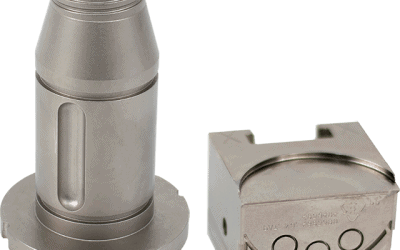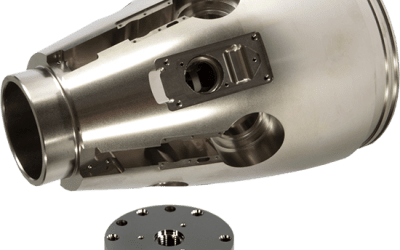A Guide to Type II 8625 Anodizing Services
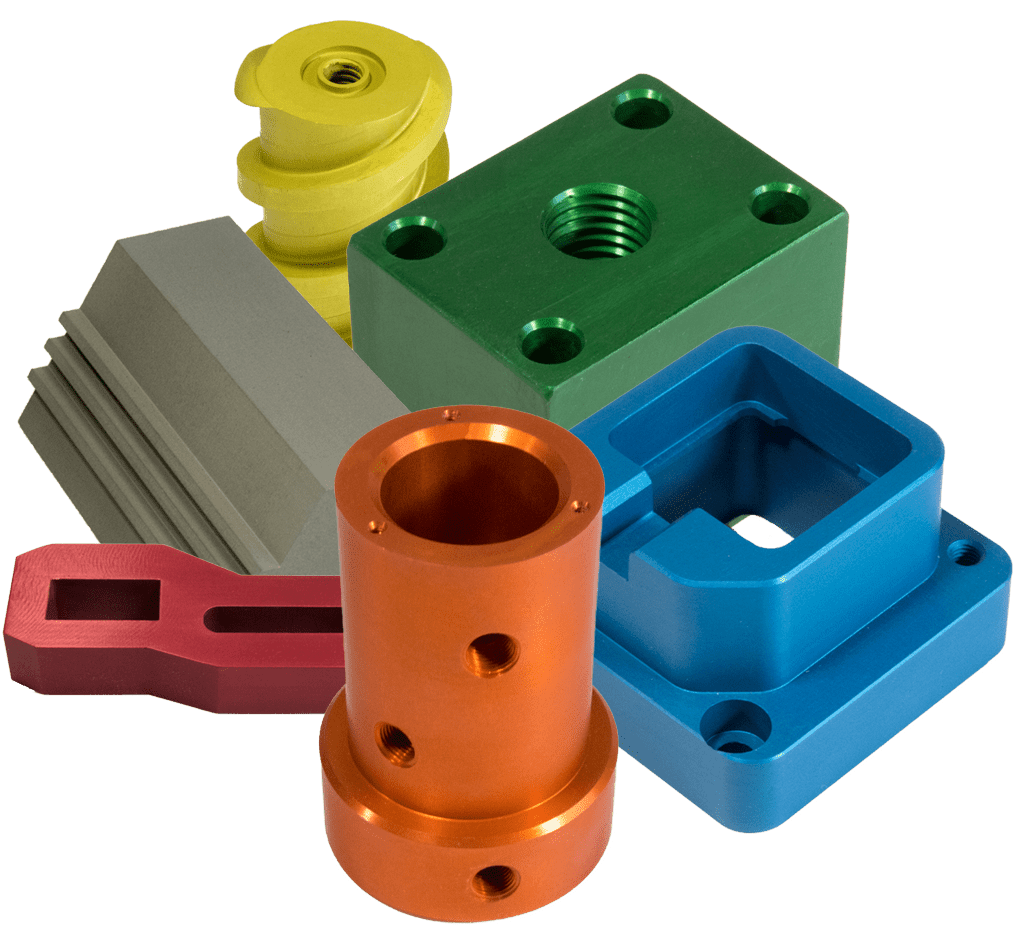
Manufacturers and OEMs that require durable, non-conductive, and corrosion-resistant finishes often rely on Type II 8625 anodizing services. As defined under the military specification MIL-A-8625, Type II anodizing uses a sulfuric acid bath to create a controlled aluminum oxide layer that forms both on the surface and within the base material.
This proven method enhances the corrosion resistance of parts or components exposed to challenging environments. In addition to protecting aluminum from weathering, abrasion, and corrosion, the process enhances its appearance through clear or dyed finishes.
Different Types of Aluminum Anodizing – Type I, II, & III Anodizing
Aluminum anodizing is divided into three primary categories under MIL-A-8625: Type I, Type II, and Type III. Each type is defined by the acid bath used, the coating thickness, and the resulting performance characteristics.
Type I Anodizing: Relies on chromic acid to form a thinner, more flexible oxide layer. While not as thick as sulfuric acid anodizing, Type I coatings provide excellent corrosion protection and are ideal for parts that need to maintain dimensional tolerances or undergo post-anodizing forming and drawing. Chromic acid anodizing also tends to “self-heal” small scratches, making it common in aerospace applications where fatigue resistance and stress corrosion prevention are critical.
Type II Anodizing: Is performed in a sulfuric acid bath at approximately 68–70°F. It creates a medium-thickness oxide layer that balances corrosion resistance, wear performance, and decorative options. Type II is widely specified under MIL-A-8625 for general-purpose anodizing services, often referred to as “conventional” or “decorative” anodizing. Coatings can be clear or dyed in a wide spectrum of colors, making Type II suitable for both industrial and aesthetic applications.
Type III Anodizing: Also known as hardcoat anodizing, is essentially the same sulfuric acid process as Type II, but carried out under much cooler bath conditions (typically 34–36°F) and higher current densities. The result is a significantly thicker, harder oxide coating with hardness approaching 65 Rockwell C. Type III anodizing provides exceptional abrasion resistance, very low porosity, and the ability to withstand extreme service conditions, such as high heat, marine environments, or heavy wear.
Uses of Type II 8625 Aluminum Anodizing
Due to the tremendous balance between durability, cost-effectiveness, and aesthetics, Type II anodizing is the most common choice for commercial and industrial aluminum finishing, not to mention the military applications that fall under MIL-A-8625. The anodizing process prevents aluminum from oxidizing, corroding, or developing a white, powdery appearance when exposed to the environment.
Once exposed to this type of corrosive environment, non-anodized components will quickly degrade and require total replacement. By electrically insulating the surface, Type II anodizing also provides a valuable dielectric property, making it useful for electronic housings, enclosures, and aerospace components where conductivity must be avoided.
Type II anodized coatings can range from 0.0001” to 0.001” in thickness, with roughly half of the oxide layer growing into the substrate and half above the surface. This dual growth pattern enhances adhesion and durability while minimizing dimensional changes. The clear anodized finish can be left as-is for a clean metallic look, or it can be dyed into nearly any color using organic or inorganic pigments. This decorative flexibility makes it ideal for consumer products, architectural trim, and branding-specific applications. However, it is important to note that different aluminum alloys accept dye differently, much like how various wood species absorb stain.
Industries Specifying Type II 8625 Anodizing:
- Aerospace – interior panels, housings, brackets, and non-structural components
- Military and Defense – components requiring compliance with MIL-A-8625 for corrosion and wear resistance
- Electronics – enclosures and cases requiring dielectric insulation
- Architectural and Consumer Products – decorative finishes with color options and enhanced weather resistance
- Marine – corrosion protection in saltwater environments when a hardcoat isn’t required
Frequently Asked Questions About Type II 8625 Anodizing Services
Are there color limits for decorative anodizing?
In theory, the color range is nearly infinite since different dye chemistries can be developed, and dye is received differently depending on aluminum blends. Standard colors such as black, bronze, blue, gold, and red are readily available and easy to apply, while custom shades can be formulated on request. White is the only finish color that is not achievable through anodizing.
Is hard anodizing the same thing as Type II anodizing?
No, they are not the same! While both Type II and Type III anodizing fall under the same MIL-A-8625 specification, hard anodizing (Type III) produces a much thicker and denser coating designed for abrasion resistance and heavy-duty use. Type II, by contrast, is lighter, thinner, and often chosen for decorative and general-purpose applications.
Can other metals, such as brass or steel, be anodized?
No, the anodizing process is unique to aluminum and its alloys. Other metals would be severely damaged by the sulfuric acid bath and do not form protective oxide layers in the same way. PFI offers coating services for non-aluminum parts. Please reach out today for more information!
How thick is the coating for decorative anodizing?
Decorative anodizing typically results in coatings from 0.0001” to 0.001” thick (2–25 µm). This range provides excellent corrosion resistance while maintaining close dimensional tolerances. Hardcoat anodizing, by comparison, can be applied up to 0.004” thick depending on the part and application.
